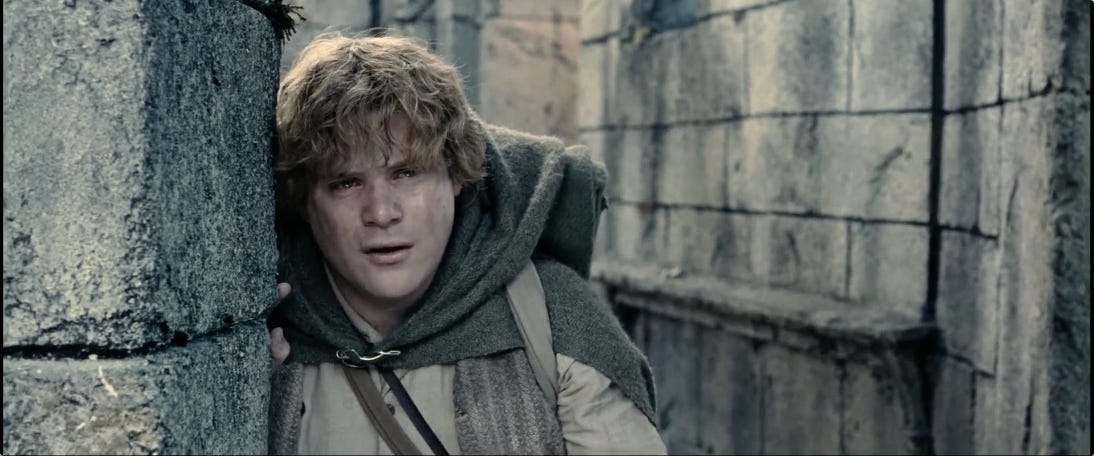Good morning, Blue Roomies, and a hearty hello to a bunch of new subscribers! And a special mae govannen to new readers who came here via JRR Jokien’s wonderful publication, Jokien with Tolkien.
If you’re new here, you might enjoy these two introductory posts: the first describes the Blue Room and what we’re about here, and the second is a little about me personally.
This week, I’m reprising the article I wrote at Jokien for Tolkien this week… a little Good Friday and Easter, a little Lord of the Rings, a little narrative theory. Enjoy!
~
When I heard Peter Jackson’s The Lord of Rings trilogy would be re-released in theaters for a single weekend last June, I hurried online to get tickets. But there was a problem: I had a scheduling conflict on the original date of The Two Towers. This was especially galling because The Two Towers is my favorite of the three films.
As luck would have it, the theaters extended the run for another weekend, but this time I had conflicts in the opposite direction—free for the second installment, conflicts for one of the others. And that’s how I came to watch The Fellowship of the Ring, then The Return of the King the first weekend, and The Two Towers later that month as the “finale.”
In retrospect, I wouldn’t have it any other way.
For me, and for many of us who love this trilogy onscreen and on the page, the stories are a touchstone, full of quotes and scenes that speak to hope and perseverance despite everything. And yes, there’s something deeply satisfying about that final movie—the ultimate triumph of good over evil, despite what it costs some of our heroes. Return of the King provides a decisive conclusion—actually many conclusions, as fans of the films like to chuckle about. Jackson isn’t just ending a film, but a trilogy, and let’s just say he takes his time and does it right. There can be no doubt that this saga is over. This week, Christians around the world are preparing for the great feast of Easter, that glorious reminder that, as Frederich Buechner puts it, the worst thing is never the last thing. JRR Jokien has connected Easter with Tolkien’s idea of eucatastrophe: the “sudden joyous turn in a fairy-story.”
But here in our world, when so much is not as it should be, what’s powerful to me is the gritty middle, when the work of wholeness still sits on our collective shoulders. There’s so much to do: people to protect and letters to write and community to be built and kids to care for and strangers to learn to trust, and ultimate victory still eludes us in many ways. The story of the resurrection, I’ve heard it said, isn’t really a conclusion but a new beginning… not an answer to a question, but a whole new set of questions: What does it mean to live as if new life is really real? For what, exactly, are we set free? How does the “already” of Easter nourish us for the “not yet” of our present challenges?
READ THE REST here:
We’ll be back next week with a continuation of our series on Emergent Strategy and how we make sustainable, transformative change. (Dip into that work here.)
Steady on.







Never saw the films. The books were enough. Can you imagine they were originally released as a single book? It was the publisher who chose to separate the stories
Such a great and needed reminder today, Maryann. It's so easy to regret and long for the past and it's just as easy to fall into resignation about a dire future. But where are we but always, always here in the gritty middle. Yes! Too easy to forget about our presence in the present. Thank you for this, friend.